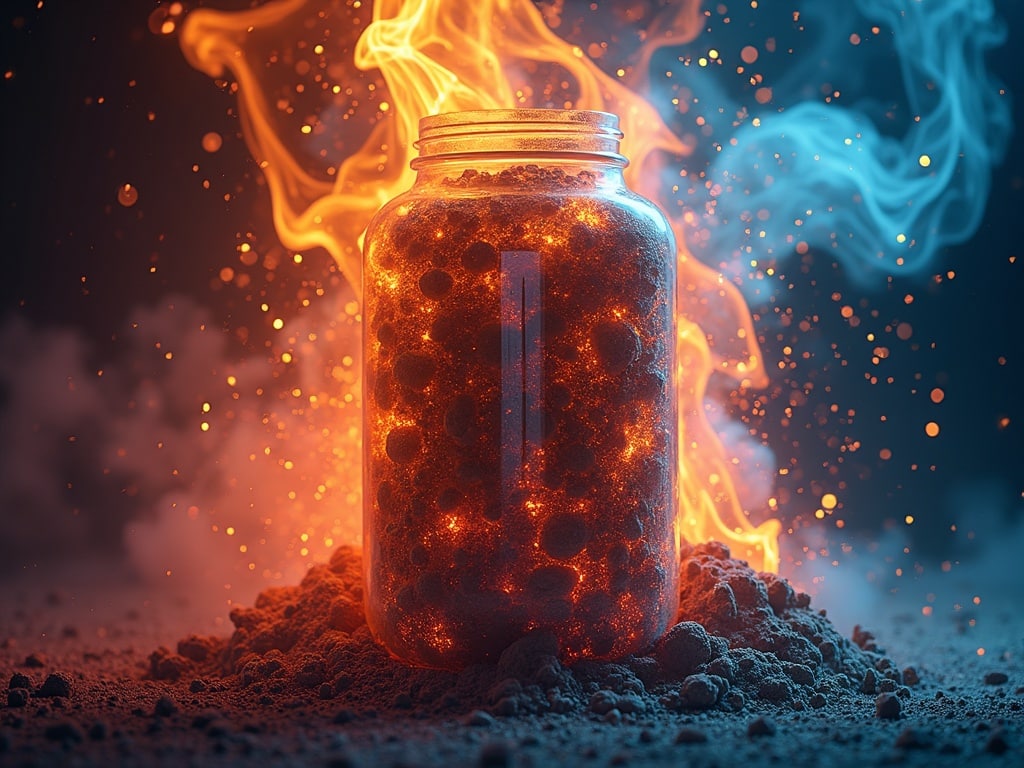Unlocking Explosive Power: How Creatine Fuels Energy and Muscle Growth
Ever feel like you're hitting a wall during your workout, your energy depleted and your muscles screaming for a break? Or maybe you're just looking for that extra edge to push past your personal best. Creatine, a naturally occurring compound in your body, might be the key to unlocking that untapped potential. For decades, it's been a staple in the fitness world, lauded for its ability to enhance strength, power, and muscle mass. But beyond the bulging biceps and impressive lifts, lies a deeper understanding of how creatine works at the cellular level to energize your muscles and supercharge your performance.
What is Creatine and Where Does it Come From?
Creatine is an amino acid derivative naturally found in muscle cells. Think of it as a ready-to-use energy reserve, primarily concentrated in your skeletal muscles. Your body produces creatine from amino acids like glycine, arginine, and methionine. You also obtain it through your diet, mainly from animal sources like red meat and fish. But for those seeking a performance boost, supplementation can significantly elevate creatine levels beyond what diet alone can provide.
The Science Behind the Supplement
Around 95% of your body's creatine is stored in your muscles as phosphocreatine. This is where the magic happens. During high-intensity activities like sprinting or weightlifting, your body uses ATP (adenosine triphosphate) as its primary energy source. ATP provides energy by releasing a phosphate molecule, becoming ADP (adenosine diphosphate). The problem is, your body's ATP stores are quickly depleted, limiting how long you can perform at peak intensity.
This is where creatine steps in. Phosphocreatine donates its phosphate molecule to ADP, regenerating it back into ATP. This rapid replenishment of ATP allows you to maintain high-intensity efforts for longer periods, leading to increased strength, power, and muscle growth. Think of it as a turbocharger for your muscles, providing short bursts of readily available energy when you need it most.
The Energy-Muscle Connection: How Creatine Fuels Growth
Creatine's benefits extend beyond simply providing energy during workouts. It also plays a crucial role in muscle growth and recovery.
- Increased Workload: By boosting ATP availability, creatine allows you to perform more reps and sets, leading to greater muscle damage and, ultimately, more significant muscle hypertrophy (growth).
- Enhanced Muscle Protein Synthesis: Studies suggest that creatine can stimulate muscle protein synthesis, the process by which your body repairs and builds new muscle tissue.
- Cellular Hydration: Creatine draws water into muscle cells, a phenomenon known as cell volumization. This increased hydration can contribute to a pumped feeling and may also play a role in muscle growth by increasing protein synthesis and decreasing protein breakdown.
- Reduced Muscle Breakdown: Some research indicates that creatine may help reduce muscle breakdown (catabolism), particularly after intense exercise.
Creatine and Different Types of Exercise
Creatine isn't just for bodybuilders. Its benefits extend to a wide range of activities, from powerlifting and sprinting to even endurance sports.
- High-Intensity Interval Training (HIIT): Creatine can improve performance during HIIT workouts by supporting repeated bursts of high-intensity effort.
- Weightlifting: It's a classic for a reason. Creatine enhances strength, power, and muscle growth, making it a staple for weightlifters.
- Sprinting and Jumping: Creatine can boost power output, leading to improved sprint times and jump height.
- Endurance Sports: While not as pronounced as in strength-based activities, creatine may still offer benefits to endurance athletes by improving glycogen storage and reducing muscle fatigue.

Choosing the Right Creatine: Forms and Dosages
While numerous forms of creatine exist on the market, creatine monohydrate remains the most widely researched and cost-effective option. Other forms, such as creatine ethyl ester and creatine hydrochloride, claim to offer superior absorption or fewer side effects, but scientific evidence supporting these claims is often lacking.
The Dosing Dilemma: Loading vs. Cycling
There are two primary approaches to creatine supplementation:
- Loading Phase: This involves taking a higher dose of creatine (typically 20 grams per day, divided into four doses) for 5-7 days to rapidly saturate muscle stores. This is followed by a maintenance phase of 3-5 grams per day.
- Maintenance Phase Only: This involves taking a lower dose of creatine (typically 3-5 grams per day) from the start, without a loading phase. This method takes longer to saturate muscle stores but is equally effective in the long run.
Cycling creatine (taking it for a period, then stopping for a period) is not necessary. As long as you're consuming adequate water, long-term creatine supplementation is generally safe and effective.
Potential Side Effects and Safety Considerations
Creatine is one of the most well-researched supplements on the market, and numerous studies have demonstrated its safety when used as directed. However, some individuals may experience mild side effects, such as:
- Water Retention: Creatine can cause temporary water retention, leading to a slight increase in body weight. This is generally harmless and often subsides over time.
- Gastrointestinal Issues: Some people may experience stomach cramps, nausea, or diarrhea, especially when taking high doses of creatine. Dividing the daily dose into smaller servings can help minimize these side effects.
- Dehydration: While creatine draws water into muscle cells, it's essential to stay adequately hydrated to avoid dehydration. Drink plenty of water throughout the day, especially when supplementing with creatine.
Individuals with pre-existing kidney conditions should consult with a healthcare professional before taking creatine.
Maximizing Creatine's Effects: Diet and Lifestyle
Creatine works best when combined with a balanced diet and a healthy lifestyle.
- Proper Nutrition: Ensure you're consuming enough protein to support muscle growth and repair. Carbohydrates can also help improve creatine uptake.
- Adequate Hydration: Drink plenty of water throughout the day to support creatine's effects and prevent dehydration.
- Consistent Training: Creatine enhances performance, but it's not a magic bullet. Consistent training is essential for maximizing its benefits.
- Sufficient Rest: Give your body adequate rest and recovery to allow your muscles to repair and rebuild.
Is Creatine Right for You? Debunking the Myths
Many misconceptions surround creatine supplementation. Let's address some of the most common myths:
- Myth: Creatine is only for bodybuilders.
Fact: Creatine can benefit anyone looking to improve their strength, power, and muscle mass, regardless of their fitness level or sport. - Myth: Creatine is a steroid.
Fact: Creatine is a naturally occurring compound, not a synthetic hormone like steroids. - Myth: Creatine causes kidney damage.
Fact: Numerous studies have shown that creatine is safe for healthy individuals and does not cause kidney damage. However, individuals with pre-existing kidney conditions should consult with a healthcare professional. - Myth: Creatine is only effective for men.
Fact: Creatine is equally effective for women and men. Women may experience similar benefits in terms of strength, power, and muscle growth.
The Verdict: Unleash Your Inner Powerhouse
Creatine is a safe, effective, and well-researched supplement that can significantly enhance energy levels, muscle growth, and overall athletic performance. Whether you're a seasoned athlete or just starting your fitness journey, creatine can help you unlock your full potential. By understanding how it works, choosing the right form, and following proper dosing guidelines, you can harness the power of creatine to fuel your workouts, build muscle, and achieve your fitness goals. So, are you ready to experience the explosive power of creatine and take your performance to the next level?
